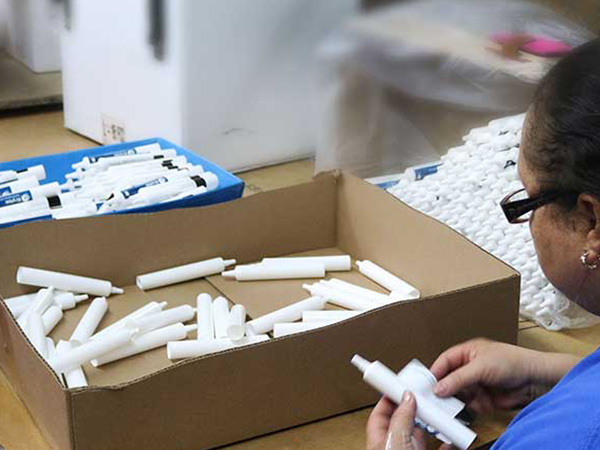For today’s consumers, recycling matters more than ever before. Green marketing has solidified itself as a staple in business marketing, no longer just a fad. Consumers are eager to reduce waste, help the environment, and live more sustainably- and they’re looking to businesses to help them make that happen.
However, today’s consumers are savvy and values-driven. They’re quick to reject brands that don’t live up to the ideals they project with their branding. They want to understand not only if their purchases can be recycled, but also how they should be recycled. In today’s market, slapping a recycling arrow on the back of your packaging is no longer enough.
Why End-of-Life Labeling Matters
End-of-life labeling is designed to help businesses communicate the recyclability of their products to consumers. This information may include the steps that must be taken to recycle the materials, if the item can be recycled traditionally or by other means, and share what type of material the item is made from.
The actual act of recycling is up to consumers. Consumers purchase items made from many different materials so it’s not uncommon to be confused about what you can and can’t recycle as well as how to recycle it. This may lead to people failing to recycle or accidentally intermixing recyclables. This sort of “aspirational recycling” requires the material to be sorted, wasting time, money, and other resources. Even material that seems easy to recycle (such as glass bottles) may end up in the trash can if consumers can’t figure out how to recycle it easily. This is where end-of-life labeling comes in.
End-of-life labeling not only helps communicate recycling practices to your customers, it also ensures the accuracy of your labeling. According to the Federal Trade Commission’s Green Guide, an item must be able to be recycled by the majority of U.S. consumers to be called recyclable. They also advise marketers to avoid using vague, broad terms like “green” and “earth-friendly,” as it is difficult to substantiate these claims. Using these terms and labeling improperly may result in an FTC violation.
Quick Tips for End-of-Life Labeling
However, there are some easy ways to communicate with your customers about recycling your product while instilling trust and encouraging sustainable behavior.
- Go beyond Resin Identification Codes (RINs) and recycling arrows.
- Follow the How2Recycle labeling process to easily communicate recycling instructions to your customers.
- Likewise, implement the How2Compost labeling process for appropriate products and packages.
- Communicate clearly with consumers about components of the item and its packaging that are not recyclable.
- Make sure to specify any steps (e.g., rinsing the packaging) that must be followed before recycling to avoid having waste streams contaminated.
- Keep instructions brief and clear.
At New-Tech Packaging, we understand creating recycling labels that meet FTC standards, fit your brand, and resonate with customers can be a challenge. That’s why we’re here to help! If you have questions about end-of-life labeling for your packaging, get in touch with us today. We’ll help you get it down in a way that makes sense for your business.
